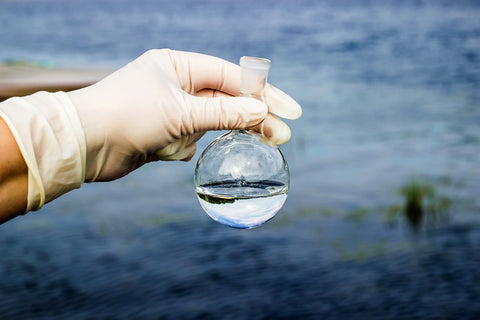
#Chromium 6 in drinking water series#
The NTP findings were controversial, and in response the American Chemistry Council (ACC) hired ToxStrategies, an environmental consulting firm, in 2011to conduct a series of studies. After the National Toxicology Program (NTP) 2008 report on Cr (VI), the California EPA proposed to regulate Cr(VI) based on studies with laboratory rodents which concluded consuming Cr(VI) in food and drinking water is carcinogenic. The California EPA delayed regulating total Cr at this time because the article’s results were challenged, followed by the author retracting his results, despite under suspicious conditions. In the now famous 1996 case, Erin Brockovich successfully won the case for Hinkley residents against PG&E for Cr(VI) contamination in local groundwater by citing a technical article concluding that an occupational exposure to chromium resulted in human cancer. However, there is still some debate on whether Cr(VI) is a carcinogen when ingested.įrom the very start, the cause and effect of chromium exposure to humans has been controversial. Cr(VI) if inhaled, on the other hand, is a highly toxic carcinogen. Cr(III) is often used in nutrient supplement and has recently been found to be oxidized to Cr(VI). Cr(III), prevalent in different plants, is nontoxic and found to be an essential nutrient involved in blood sugar metabolism. Both forms can interconvert under different oxidative and pH conditions. The natural weathering, such as rock corrosion, and industrial activities including leather tanning, stainless steel welding, plating solutions, and Cr pigment production, are the common ways Cr are transmitted to our air, water, soil, and food.Ĭr has seven forms or species in nature, but only trivalent (III) and hexavalent (VI) exist in water. 20, 2016, millions of Americans today still drink water with “ dangerous level of chromium (VI)”.Ĭr is the 21 th most abundant element in the earth crust, and almost all Cr is from chromite (FeCr 2O 4) ore. According to the national report released on Sept. After the 2000 movie, Erin Brockovich, chromium (VI) has continued to be a major threat to our drinking water.
#Chromium 6 in drinking water download#
The EPA is currently evaluating Hexavalent Chromium through this and other programs.While the story is still developing for lead contamination in drinking water at Flint, Michigan (to see how it can happen, download the lead contamination infographic), we heard that chromium (VI), or Cr(VI) has been found in drinking water at Boulder, Colorado. The EPA maintains an active program called the Contaminant Candidate List (CCL) to identify contaminants in public drinking water that warrant detailed study.The level in which they are found in source waters is very small in comparison. While this metal may be detected at very low levels in source waters, people regularly consume or expose themselves to products containing this metal in much higher concentrations (i.e., chrome fixtures, metal pots and other chromed items around the home).The fact that a substance is detectable does not mean the substance is harmful to humans.


Raleigh Water is committed to protecting public health and ensuring the safety of the drinking water for our customers in Raleigh and the surrounding communities of Garner, Knightdale, Rolesville, Wake Forest, Wendell and Zebulon. Raw water is intake water prior to any treatment or use.Īs research evolves on this subject, the Raleigh Water will continue to monitor the results and will comply with all standards adopted through implementation of any new Federal and State regulations.

Finished water is water that has passed through all processes in a water treatment plant and is ready to be delivered to consumers.The following table presents the city's results for this voluntary testing. Water distribution sampling locations coincided with lead and copper sampling locations and maximum residence times within the system. EPA's Third Unregulated Contaminant Monitoring Rule (UCMR-3)Īs recommended by EPA, the Raleigh Water undertook preliminary sampling for chromium-6 for both source water and finished (treated) water.


 0 kommentar(er)
0 kommentar(er)
